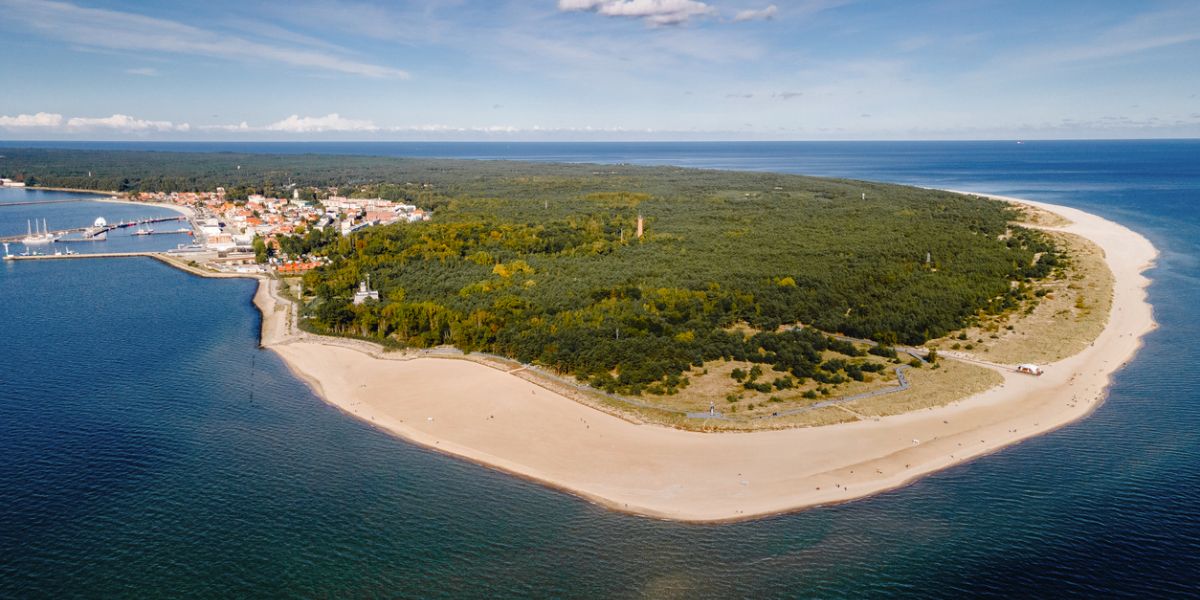What is a Peninsula?

What Exactly is a Peninsula?
A peninsula is a landform that is mostly, but not completely, surrounded by water. A peninsula will be connected to a larger landmass, such as a continent or an island, but it will extend out from the mainland into the water prominently.
The word comes from the Latin phrase paene insula, which translates into English as "almost an island."

What It Means to be "Almost an Island"
A peninsula stretches out into a substantial body of water, typically an ocean. Most of Florida, for instance, is surrounded on the east and west by the Atlantic Ocean as it stretches out from North America. But one or more large lakes will also suffice, as is the case with the two peninsulas surrounded by the Great Lakes that make up the state of Michigan.
Land between two rivers that meet up, or in the middle of a sharp bend in a river, will sometimes be referred to as a peninsula, as in the New Barbadoes Neck in New Jersey. But the most commonly known peninsulas are formed by the oceans or large lakes.
The definition of a peninsula can be a bit arbitrary, and has as much to do with convention and politics as any geographical rules. On a map Europe may look like a peninsula that extends westward from the larger landmass of Eurasia, but historians and geographers have treated it as a separate continent for centuries. Likewise, much of India juts into the Indian Ocean, but it is more often described as a subcontinent rather than a peninsula.
A peninsula needs to be an obvious extension, at least when compared to its overall size. A slight outward bend in the shoreline, as can be seen along the Florida panhandle near Tallahassee, will not be called a peninsula.
Types of Peninsulas
A peninsula can also be called a point, a spit, a cape, or a headland. Each of these has its own distinctive sense:
- A point is generally narrow and tapers at the end
- A spit is usually sandy, low, and formed by wave action
- A cape will tend to be rocky
- A headland will frequently have a steep drop from the coast to the water level.
Some Famous Examples: Korea, Italy, and Baja California
A peninsula can extend out from another peninsula. The nation of Qatar occupies a peninsula in the Persian Gulf on the northeastern coast of the Arabian peninsula. The Arabian Peninsula is widely considered to be the largest peninsula in the world.
The short land border can result in a peninsula becoming the home of one or more distinctive cultures that distinguish it from the mainland. This is the case with the Korean Peninsula, located between the Sea of Japan and the Yellow Sea. The same applies to the Iberian peninsula, which is occupied by Spain and Portugal.
A peninsular location may seem isolated, but depending on local conditions a peninsula can be well developed and economically connected, as it is accessible over land but can also offer harbors and other access points to the sea. A peninsula can even be the base of a great power, as was the case with Italy. Rome made the most of its location on a peninsula in the Mediterranean Sea as it built its great empire.
Baja California offers a rugged interior and beaches facing both the Pacific Ocean and the Gulf of California. this narrow peninsula is the site of numerous resorts, and has become popular with American retirees.
The Difference between a Peninsula and an Isthmus
A peninsula is different from an isthmus. An isthmus is a narrow piece of land connecting two larger landmasses between two bodies of water. The City of Seattle sits on an isthmus between Puget Sound and Lake Washington. Panama is another example of an isthmus, connecting North and South America between the Atlantic and Pacific oceans. A peninsula is linked to only one larger landmass.
There are hundreds of locations that are commonly called peninsulas scattered throughout the world. Learn more about these and other places with our Geography and Atlas content.







